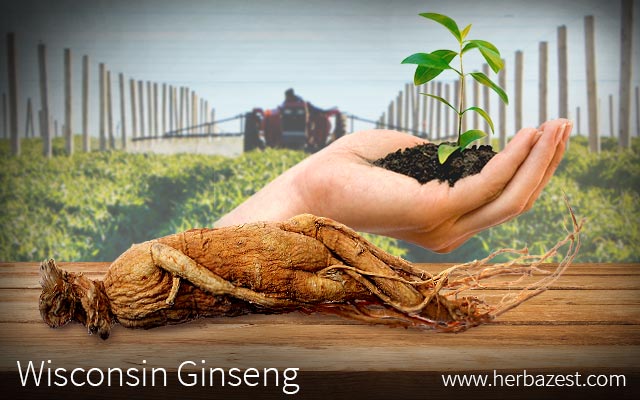The first evidence of wild ginseng cultivation can be traced back to 1904, when the Fromm brothers, from the town of Hamburg, transferred 100 wild ginseng plants from the nearby forests to plots that replicated their natural growing conditions. By 1919, with thousands of ginseng farms sprouting up there, Wisconsin became the leading ginseng-producing state in the U.S. However, since the general wild ginseng population has declined over the years, the state of Wisconsin has taken great strides to protect the plant.
Quality of Wisconsin Ginseng
The exceptional quality of Wisconsin ginseng root is attributed to its high ginsenoside levels, which are believed to be responsible for the herb's extensive benefits. According to the FCF Ginseng Farm in Wisconsin, the average ginsenoside content of premium Wisconsin woodsgrown American ginseng reaches 13%, whereas other American ginseng varieties and Asian ginseng have, on average, less than 9% ginsenosides.
To maintain the superior quality of Wisconsin grown ginseng, strict guidelines are in place for harvesting practices to ensure that no plants are damaged or wasted.
The harvest season is from September 1st to November 1st, during which time a ginseng plant can only be harvested if it possesses three or more true leaves and flowering stalks. Once the plants are harvested, all seeds must be planted within the vicinity of the parent plants to favor continuous growth. In order to be able to sell harvested wild ginseng or dig on other peoples' property, all Wisconsin ginseng dealers require a special harvester's license from the Ginseng Board of Wisconsin.
Importance of Wisconsin Ginseng
Wisconsin has a very strong hold on the cultivated wild ginseng market, and so it is no surprise that the herb carries great economic value for the state. In 1990, Wisconsin ginseng growers cultivated up to 5,000 acres of wild ginseng and earned roughly $70 million USD for farmers in Marathon County, one of the largest ginseng-producing counties in Wisconsin.
Wisconsin grown ginseng is mainly exported duty-free to Hong Kong, from where it is redistributed to China and other Asian countries to be used in Traditional Chinese Medicine (TCM).
The Wisconsin ginseng root has become such an essential trade item that, in order to ensure its survival and sustainable use, the Wisconsin woodsgrown American ginseng has been listed as a protected species under the Convention on International Trade in Endangered Species of Wild Fauna and Flora (CITES).
Wisconsin Ginseng Price
The price of premium Wisconsin woodsgrown American ginseng depends on the root type of processing, which ranges from raw to dried at different degrees (white, red, or black), and also powdered, and the quantity in which it is purchased. The dried root of Wisconsin grown ginseng is available for roughly $57 - 102 USD per pound. However, many people prefer it in powder form, which can be purchased at $35 - 65 USD per pound. Ginseng powder is often encased in capsules and sold in bottles with roughly 100 count for around $15 - 20 USD.
Since 1991, the Wisconsin Ginseng Seal Program has labeled packaged wild ginseng products to showcase their authenticity and indicate that they were made from wild ginseng grown and harvested from a Wisconsin ginseng farm.
Where to Buy Wisconsin Ginseng
Wisconsin ginseng can be bought online through the American Herbal Products Association, which recommends trusted herbal companies.
The best way to ensure that the product is authentic is to identify a licensed seller with the official Wisconsin ginseng seal.
Wisconsin ginseng benefits and high quality have been prized internationally, and the herb has provided a valuable market for the state of Wisconsin, with a promising future granted by the protective measures taken to ensure the survival of this cherished American species.
Sources
- American Herbal Products Association, Good Stewardship Harvesting of Wild American Ginseng brochures
- United States Fish and Wildlife Service, International Affairs, Permits by Species, American Ginseng | Plants, American Ginseng
- University of Wisconsin, Department of Agricultural and Applied Economics, Status of the Wisconsin Ginseng Industry
- Wisconsin Department of Natural Resources, Wild Ginseng Regulations and Guidelines for Sustainable Harvest
- Alternative Field Crops Manual, Ginseng




